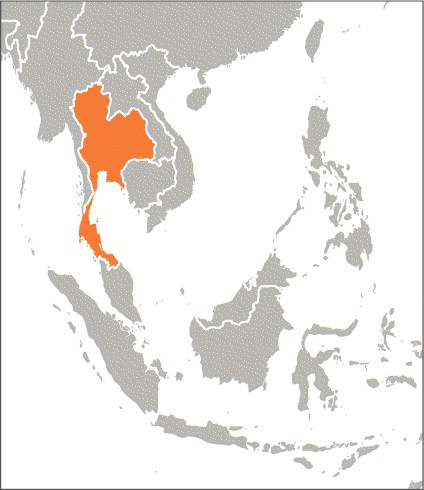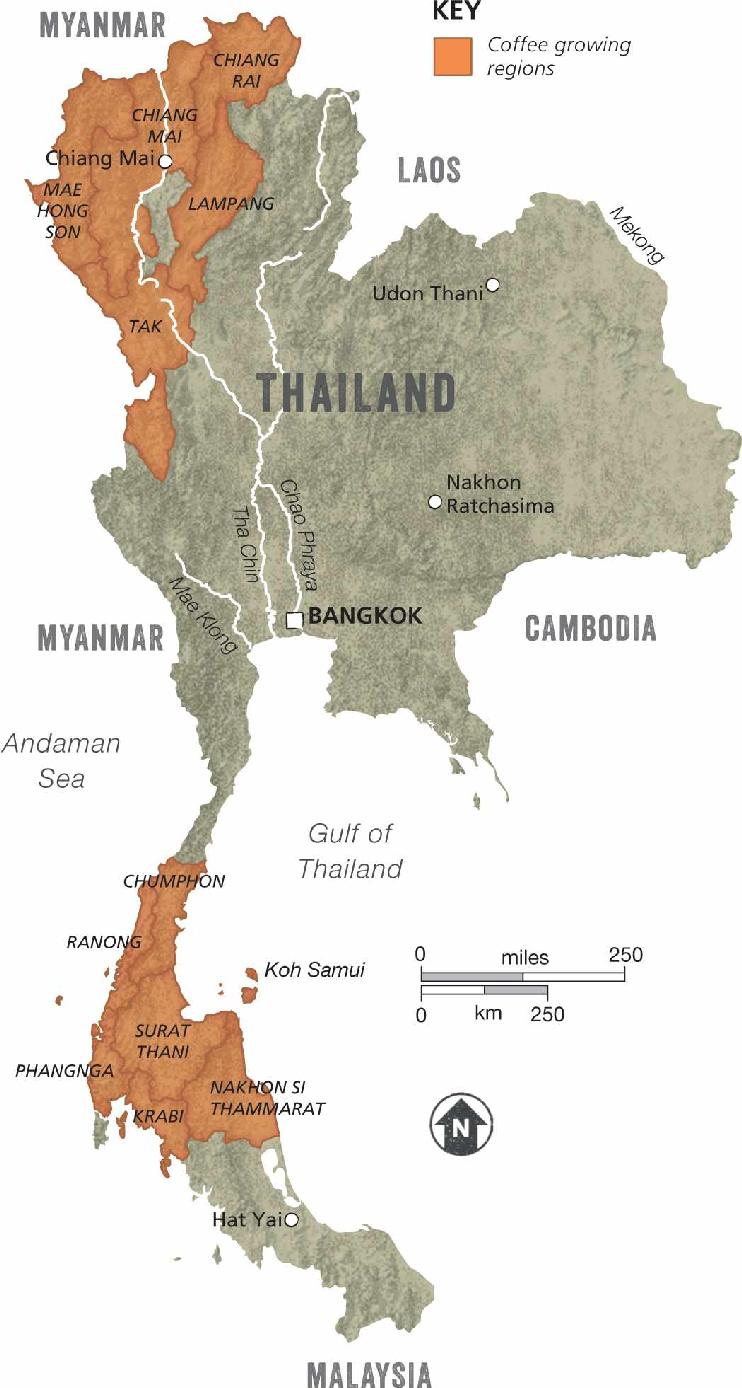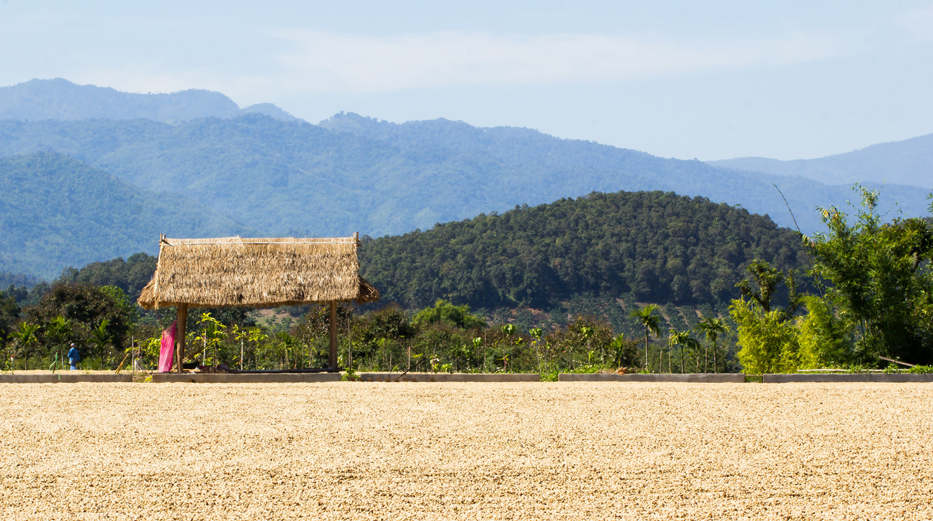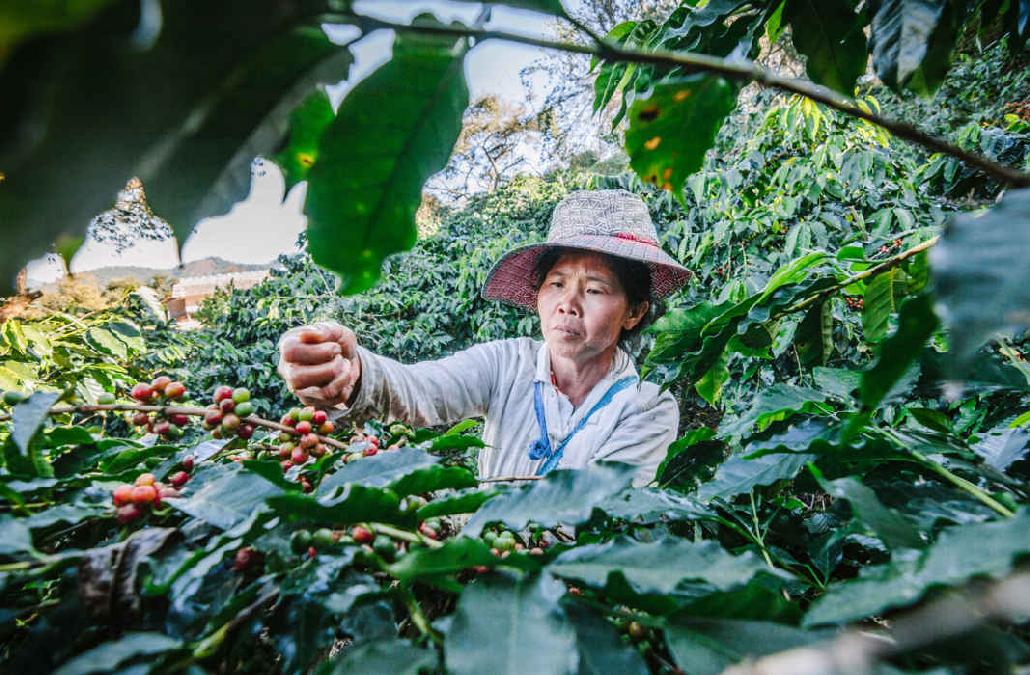One of the most credible stories of coffee’s introduction to Thailand dates to 1904. A Muslim pilgrim, returning home from Mecca, passed through Indonesia on his way back to Thailand and brought with him a Robusta plant, which he planted in the south of the country. Another story describes an Italian immigrant bringing Arabica to the north of the country in the 1950s. Whether either or both of these stories are true, it wouldn’t be until the 1970s that any economic importance was placed on coffee as a crop.

Between 1972 and 1979, the Thai government ran a pilot project to try to encourage farmers in the northern region to grow coffee instead of poppies destined for opium production. Coffee was considered sufficiently high value to be worth switching from opium production and the slash-and-burn style of agriculture that accompanied it. While this project did mark the beginning of a coffee industry in Thailand, coffee did not become a major crop until later.
Production peaked in the very early 1990s, but global price fluctuations have deterred producers so there have been substantial swings in production over the last two decades. As it is mostly Arabica grown in the north of the country and Robusta in the south, a large part of the fluctuation comes from the northern highlands where the price would have a bigger impact. Accurate tracking of production in Thailand is difficult, as coffee is often smuggled across the borders from Laos and Myanmar.
Today Thailand is steadily building a reputation as an underdog among producers of great coffees. While most coffee produced in the country isn’t particularly high quality, there are some farms and cooperatives working hard to produce an excellent product. The increasing domestic consumption of quality coffee is also helping growth in the industry.

TRACEABILITY
Coffees very, very rarely come from single estates. More common are producer groups or cooperatives among the more quality-focused producers.

Coffee beans spread out to dry in the sun in northern Thailand, where mostly Arabica is grown. The south of the country only produces Robusta.
TASTE PROFILE
Better coffee from Thailand is sweet, quite clean, but relatively low in acidity. Some spice and chocolate often accompany a relatively full mouthfeel.
GROWING REGIONS
Population: 68,864,000
Number of 60kg (132lb) bags in 2016: 664,000
NORTHERN REGION
The northern mountainous area of Thailand is made up of coffee-growing provinces such as Chiang Mai, Chiang Rai, Lampang, Mae Hong Son and Tak. All the speciality coffee from Thailand comes from this area, via the Doi Chaang collective.
| Harvest: | November–March |
| Altitude: | 1,000–1,600m (3,280–5,250ft) |
| Varieties: | Caturra, Catimor, Catuai |
SOUTHERN REGION
The south of the country grows Robusta only, and coffee is produced in the provinces of Surat Thani, Chumphon, Nakhon Si Thammarat, Phang Nga, Krabi and Ranong.
| Harvest: | December–January |
| Altitude: | 800–1,200m (2,620–3,940ft) |
| Varieties: | Robusta |
 Community workers select coffee beans at Doi Chaang Coffee in the highlands of Chiang Rai Province.
Community workers select coffee beans at Doi Chaang Coffee in the highlands of Chiang Rai Province.
 A woman picks ripe red cofee cherries at a plantation in Chiang Rai in November, when the harvest season begins in northern Thailand. The last coffee crops are harvested in March.
A woman picks ripe red cofee cherries at a plantation in Chiang Rai in November, when the harvest season begins in northern Thailand. The last coffee crops are harvested in March.